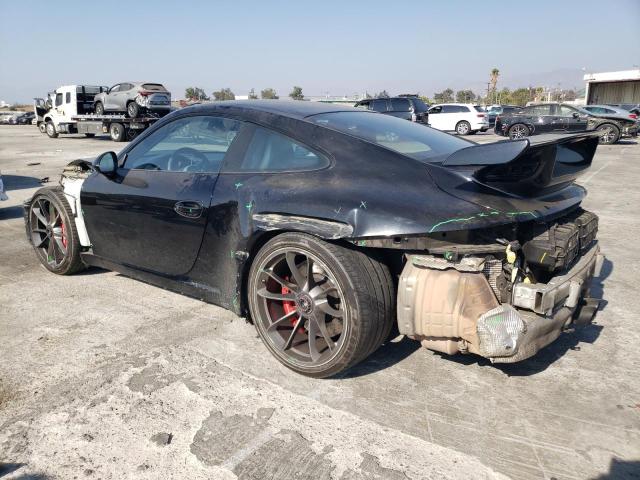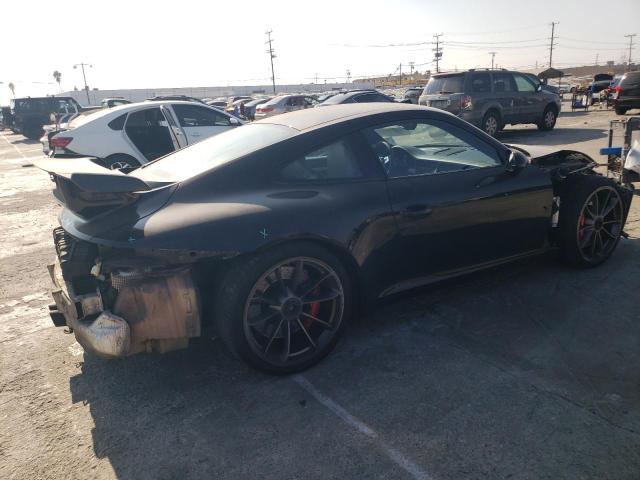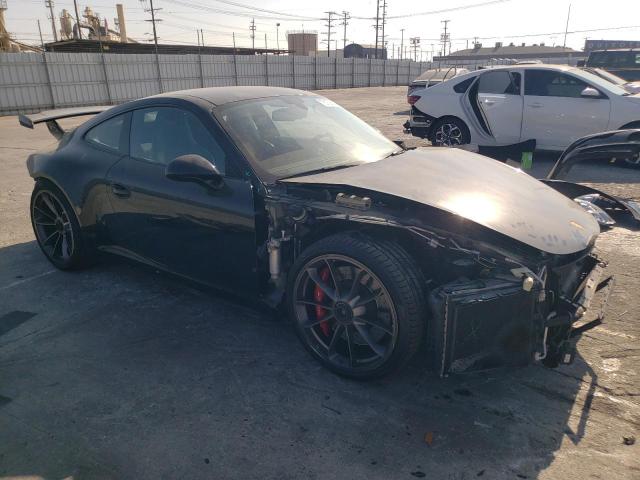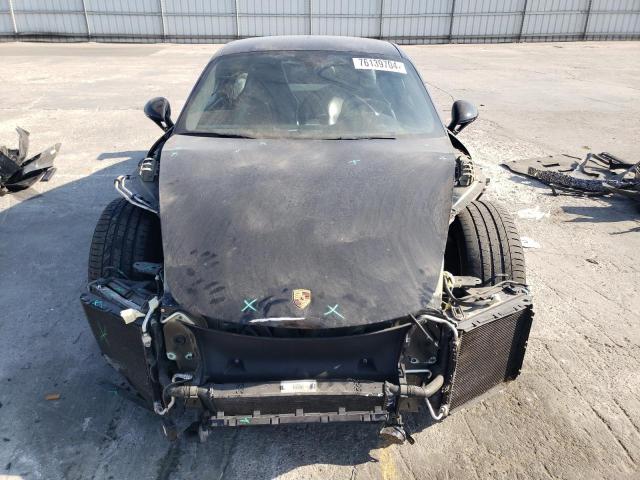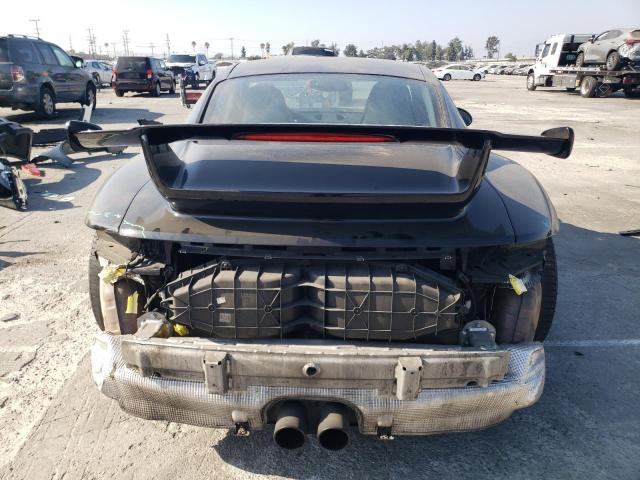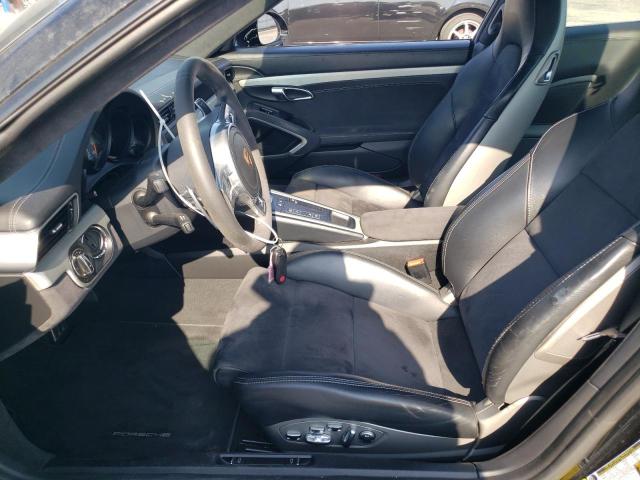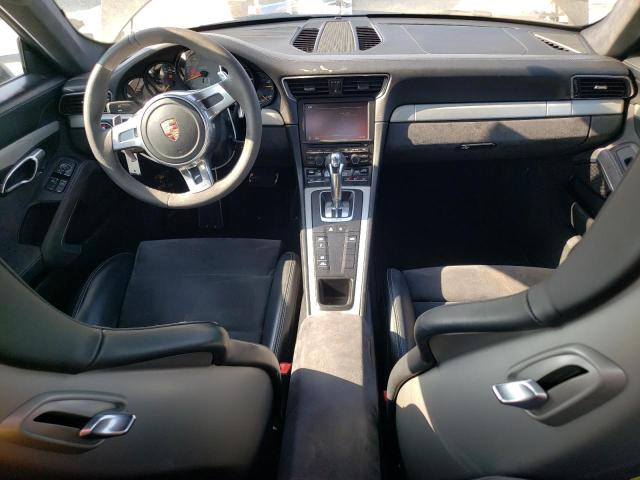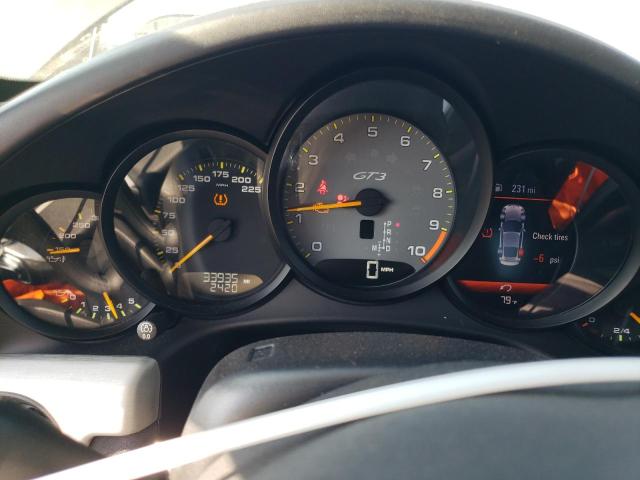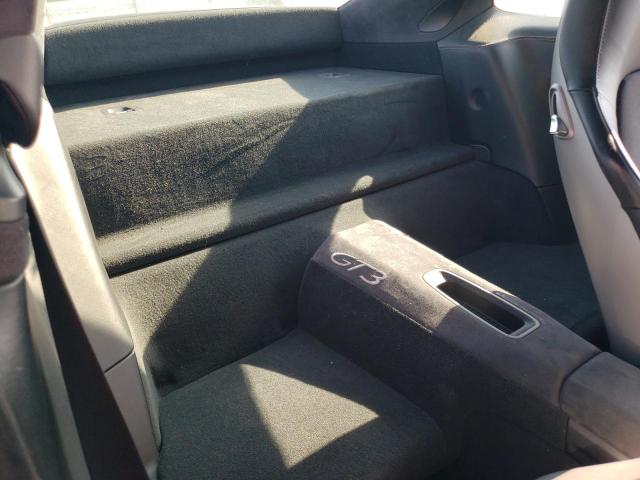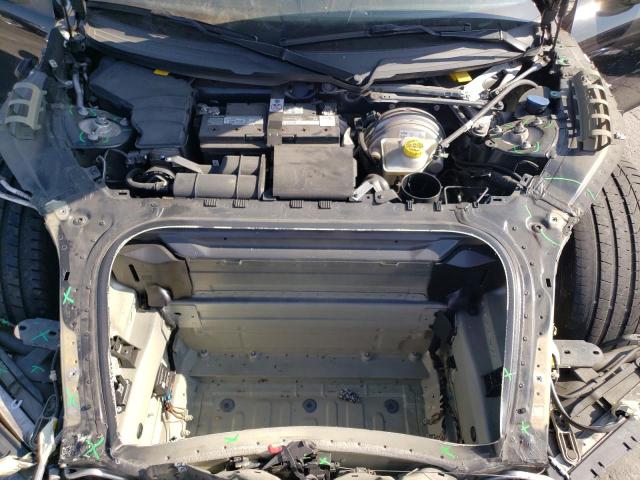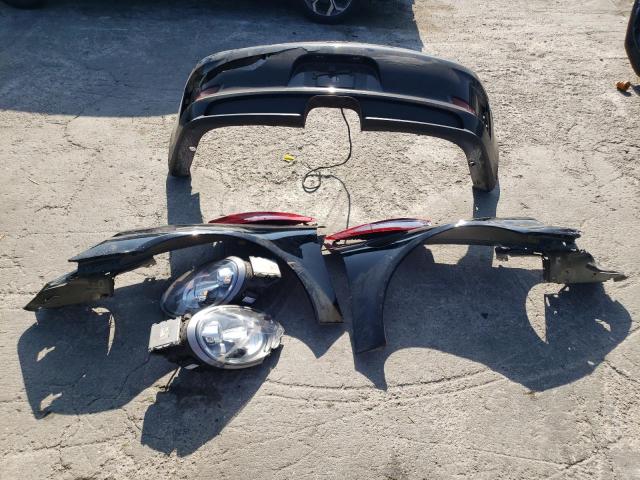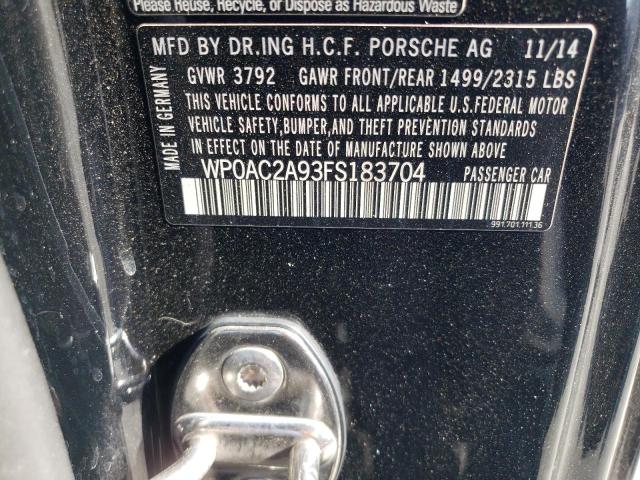2015 PORSCHE 911 | WP0AC2A93FS183704
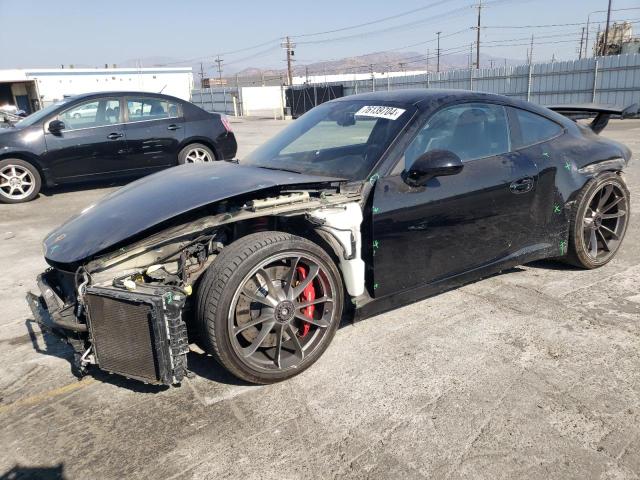 ❯
❯
Specifications
17
~$293,000
Engine: 3.8L flat-6 twin-turbo
Torque: 750 Nm
0–100 km/h: ~2.8 s
The 991.2 GT2 RS stands as the most extreme 911 Porsche had ever built at its time of release, blending turbocharged brutality with motorsport-grade engineering. Its 3.8-liter twin-turbocharged flat-six, derived from the 911 Turbo S, was reengineered to deliver 700 horsepower and 750 Nm of torque—making it the most powerful road-going 911 in history. Power is delivered to the rear wheels only, via a lightning-quick 7-speed PDK transmission, resulting in a 0–100 km/h sprint in 2.8 seconds and a top speed of 340 km/h. But the GT2 RS is not just about straight-line savagery—it’s a lap-time killer. Its Nürburgring time of 6:47.3 proved it could outpace hypercars, all while maintaining road legality.
Beneath the bodywork, the GT2 RS borrows extensively from the GT3 RS and racing division: carbon fiber panels, active aero, massive rear diffuser, and a motorsport-tuned suspension system with adjustable components. It includes rear-axle steering, PASM adaptive dampers, ceramic composite brakes, and advanced traction calibration to manage the car’s immense power. Yet, the experience remains raw and terrifyingly analog. Unlike AWD Turbo models, the GT2 RS demands precision, commitment, and respect. It punishes hesitation and rewards skill with astonishing grip, balance, and responsiveness.
What makes the GT2 RS exceptional is its fusion of opposites—lightweight philosophy with brute force, track readiness with road compliance, and extreme speed with surgical accuracy. It’s not simply a faster 911. It’s a culmination of Porsche’s entire air-cooled, water-cooled, naturally aspirated, and turbocharged legacy. The GT2 RS is not just the king of the 991 generation—it’s one of the most focused and fearsome production cars ever built.
Body Styles
Coupe & Cabriolet & Targa
Model Name Meaning (Manufacturer)
The “911” name continues its lineage since 1964, with the 991 generation marking the longest 911 platform to date. It introduced an entirely new chassis, over 90 mm longer than the 997, with a wider track, revised suspension geometry, and a more refined ride. The switch to electric power steering, turbocharging, and increased tech marked it as the most modern 911 yet — without straying far from its core values of balance, performance, and daily usability.
Model Name Meaning (Languages)
Globally consistent and culturally neutral, “911” is instantly associated with German engineering, racing heritage, and performance luxury. In every language, it means iconic — with no translation required. Trim names like “Carrera”, “Targa”, “Turbo”, and “GT3” also carry weight worldwide thanks to decades of motorsport success and enthusiast recognition.
Body & Interior Colors and Rims
Exterior color options ranged from timeless staples like Guards Red, GT Silver, and Carrara White to expressive choices like Lava Orange, Miami Blue, and Racing Yellow. Porsche’s Paint to Sample (PTS) program allowed access to vintage hues like Oak Green Metallic and Gulf Blue.
Interiors were available in classic Black, Luxor Beige, Espresso, Bordeaux Red, and two-tone combinations, with leather, Alcantara, and carbon fiber or aluminum trims depending on the model. GT and Turbo trims offered track-ready bucket seats, center-lock wheels, and interior details inspired by motorsport.
Wheels ranged from 19” to 20” alloys in Turbo, RS Spyder, or center-lock designs. Performance options included carbon ceramic brakes (PCCB), rear-axle steering, adaptive dampers (PASM), and active aero elements on Turbo and RS models.
Top Expensive Options
- PCCB Carbon Ceramic Brakes – $9,210
- Sport Chrono Package (launch control, lap timers, drive modes) – $2,090
- Front Axle Lift System (GT3/RS) – $3,490
- Lightweight Bucket Seats (GT models) – $5,200
- PDK Transmission (on manual-eligible trims) – ~$3,500
- Burmeister or BOSE Surround Sound Systems – $1,600–$5,000
- Paint to Sample (PTS) Color – ~$11,000
- Carbon Interior Package – $3,200
- Rear-Axle Steering – $2,000
- GT Sport Steering Wheel with Drive Mode Selector – $700
vs Competitors
The 991 went toe-to-toe with the Audi R8 V10, Mercedes-AMG GT, Jaguar F-Type R, and BMW M6, while also challenging more exotic rivals like the McLaren 570S and Aston Martin Vantage V12 in upper trims. Its unique rear-engine layout, mix of refinement and purity, and the sheer variety of versions — from open-top cruisers to track-destroying GT3 RS models — made the 991 the most versatile sports car of its era.
Fun Fact
The 911 R (2016) — essentially a GT3 RS with a manual and no wing — was built in just 991 units, immediately selling out and doubling in value on the secondhand market within months. It was Porsche’s tribute to driving purity, and public demand for the R led to the return of the manual transmission in the GT3 991.2 — a rare case of enthusiast demand reshaping a brand’s trajectory.
Lot Details
-
Sale Date11/Jun/2025
-
Lot Number76139704
-
Location
-
Odometer33,935 miles (54,613 km)
-
Primary Damage:FRONT END
-
Secondary DamageREAR END
-
Fuel
-
Engine Type3.8L 6
-
Transmission
-
Drive Type
-
Color
Final Bid Porsche 911 (2015)
$19,400
$54,319
$85,000
Specifications
17
~$293,000
Torque:
0–100 km/h:
The 991.2 GT2 RS stands as the most extreme 911 Porsche had ever built at its time of release, blending turbocharged brutality with motorsport-grade engineering. Its 3.8-liter twin-turbocharged flat-six, derived from the 911 Turbo S, was reengineered to deliver 700 horsepower and 750 Nm of torque—making it the most powerful road-going 911 in history. Power is delivered to the rear wheels only, via a lightning-quick 7-speed PDK transmission, resulting in a 0–100 km/h sprint in 2.8 seconds and a top speed of 340 km/h. But the GT2 RS is not just about straight-line savagery—it’s a lap-time killer. Its Nürburgring time of 6:47.3 proved it could outpace hypercars, all while maintaining road legality.
Beneath the bodywork, the GT2 RS borrows extensively from the GT3 RS and racing division: carbon fiber panels, active aero, massive rear diffuser, and a motorsport-tuned suspension system with adjustable components. It includes rear-axle steering, PASM adaptive dampers, ceramic composite brakes, and advanced traction calibration to manage the car’s immense power. Yet, the experience remains raw and terrifyingly analog. Unlike AWD Turbo models, the GT2 RS demands precision, commitment, and respect. It punishes hesitation and rewards skill with astonishing grip, balance, and responsiveness.
What makes the GT2 RS exceptional is its fusion of opposites—lightweight philosophy with brute force, track readiness with road compliance, and extreme speed with surgical accuracy. It’s not simply a faster 911. It’s a culmination of Porsche’s entire air-cooled, water-cooled, naturally aspirated, and turbocharged legacy. The GT2 RS is not just the king of the 991 generation—it’s one of the most focused and fearsome production cars ever built.
Body Styles
Coupe & Cabriolet & Targa
Model Name Meaning (Manufacturer)
The “911” name continues its lineage since 1964, with the 991 generation marking the longest 911 platform to date. It introduced an entirely new chassis, over 90 mm longer than the 997, with a wider track, revised suspension geometry, and a more refined ride. The switch to electric power steering, turbocharging, and increased tech marked it as the most modern 911 yet — without straying far from its core values of balance, performance, and daily usability.
Model Name Meaning (Languages)
Globally consistent and culturally neutral, “911” is instantly associated with German engineering, racing heritage, and performance luxury. In every language, it means iconic — with no translation required. Trim names like “Carrera”, “Targa”, “Turbo”, and “GT3” also carry weight worldwide thanks to decades of motorsport success and enthusiast recognition.
Body & Interior Colors and Rims
Exterior color options ranged from timeless staples like Guards Red, GT Silver, and Carrara White to expressive choices like Lava Orange, Miami Blue, and Racing Yellow. Porsche’s Paint to Sample (PTS) program allowed access to vintage hues like Oak Green Metallic and Gulf Blue.
Interiors were available in classic Black, Luxor Beige, Espresso, Bordeaux Red, and two-tone combinations, with leather, Alcantara, and carbon fiber or aluminum trims depending on the model. GT and Turbo trims offered track-ready bucket seats, center-lock wheels, and interior details inspired by motorsport.
Wheels ranged from 19” to 20” alloys in Turbo, RS Spyder, or center-lock designs. Performance options included carbon ceramic brakes (PCCB), rear-axle steering, adaptive dampers (PASM), and active aero elements on Turbo and RS models.
Top Expensive Options
- PCCB Carbon Ceramic Brakes – $9,210
- Sport Chrono Package (launch control, lap timers, drive modes) – $2,090
- Front Axle Lift System (GT3/RS) – $3,490
- Lightweight Bucket Seats (GT models) – $5,200
- PDK Transmission (on manual-eligible trims) – ~$3,500
- Burmeister or BOSE Surround Sound Systems – $1,600–$5,000
- Paint to Sample (PTS) Color – ~$11,000
- Carbon Interior Package – $3,200
- Rear-Axle Steering – $2,000
- GT Sport Steering Wheel with Drive Mode Selector – $700
vs Competitors
The 991 went toe-to-toe with the Audi R8 V10, Mercedes-AMG GT, Jaguar F-Type R, and BMW M6, while also challenging more exotic rivals like the McLaren 570S and Aston Martin Vantage V12 in upper trims. Its unique rear-engine layout, mix of refinement and purity, and the sheer variety of versions — from open-top cruisers to track-destroying GT3 RS models — made the 991 the most versatile sports car of its era.
Fun Fact
The 911 R (2016) — essentially a GT3 RS with a manual and no wing — was built in just 991 units, immediately selling out and doubling in value on the secondhand market within months. It was Porsche’s tribute to driving purity, and public demand for the R led to the return of the manual transmission in the GT3 991.2 — a rare case of enthusiast demand reshaping a brand’s trajectory.


